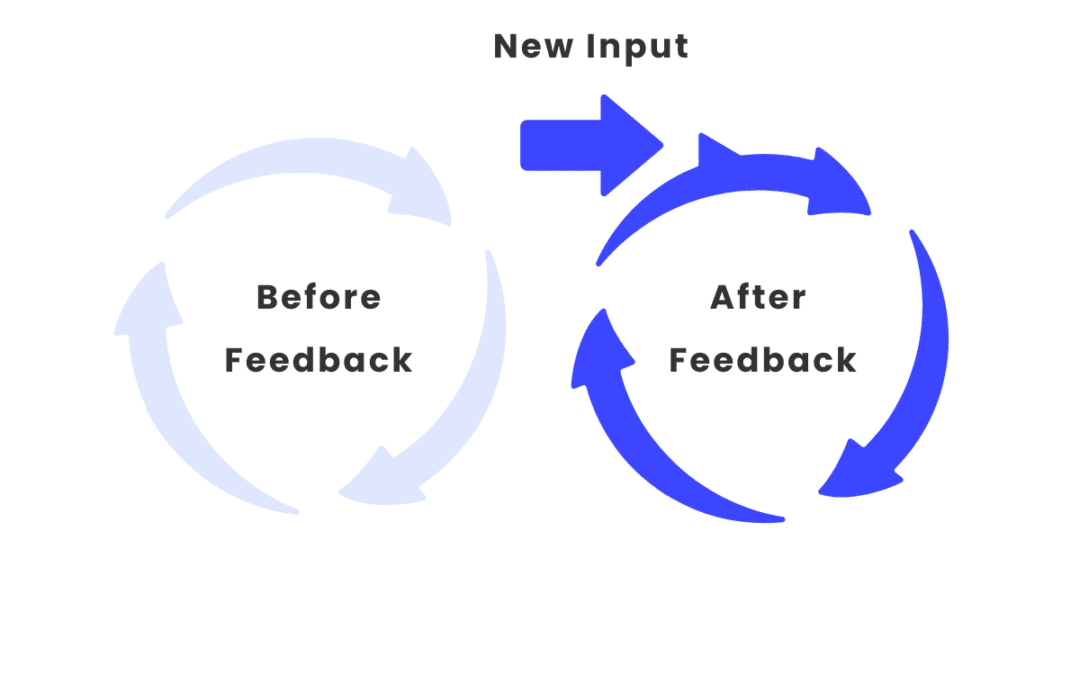Reading Time: 4 minutes
Understanding Feedback Loops
Feedback loops are fundamental to understanding how systems operate, from our body’s temperature regulation to global financial markets. These loops occur when outputs of a system circle back as inputs, influencing the system’s ongoing behavior. They can be either positive or negative, leading to either amplification or stabilization of the system.
1. Negative Feedback Loops: Maintaining Equilibrium
- Negative feedback loops are crucial for maintaining stability in a system.
- Example: A thermostat controls room temperature by turning the furnace on or off, maintaining a set temperature.
- In nature, human body temperature regulation operates similarly, using signals to adjust and stabilize internal temperature.
2. Positive Feedback Loops: Driving Change
- Positive feedback loops amplify changes, leading to rapid growth or decline.
- However, unchecked positive feedback can lead to negative outcomes, as seen in the escalation of head and neck injuries due to the introduction of harder, more padded football helmets.
- In business and economics, positive feedback can explain market bubbles and crashes, as optimism or fear feed upon themselves.
3. Balancing Feedback Loops: The Key to System Health
- Most healthy systems have a mix of positive and negative feedback loops.
- For example, ants foraging for food create a positive feedback loop by following chemical trails, but they also periodically re-engage in random searches, a negative feedback mechanism that introduces diversity and resilience.
Where Feedback Loops Can Be Found
1. Systems: Feedback loops occur when a system’s outputs circle back and affect the system itself. They can be positive (enhancing the output) or negative (stabilizing the system).
2. Negative Feedback Loop Example: A thermostat controlling room temperature. When the room gets too hot, the thermostat cools it down, and vice versa, maintaining a steady temperature.
3. Positive Feedback Loop Example: The credit crisis of 2008/2009, where fear led to economic contraction, further fueling fear and deepening the crisis.
4. Human Body Example: Our bodies maintain a steady temperature through negative feedback. When we’re too hot, we sweat to cool down; when we’re cold, we shiver to warm up.
5. Design Implications: Feedback loops mean all parts of a system are interconnected. Changes in one area can impact the whole system and other systems.
6. Nature’s Feedback Loops: Ants finding food demonstrate positive feedback. They follow chemical trails, leading to efficient food gathering but also occasionally overcrowding one path while another remains unused.
7. Impact on Earth’s Ecosystems: Large-scale environmental changes, like deforestation, can disrupt natural feedback loops, leading to negative consequences like reduced rainfall and drought.
8. Human Behavior: Feedback loops are integral to learning and decision-making, playing a key role in how we perceive and react to information.
8. Economic and Business Dynamics: In business and markets, both positive and negative feedback loops can influence growth, stability, or decline. They can explain phenomena like stock market bubbles and industry dominance.
Self-Inquiries and Actionable Practices
1. Identify Feedback Loops in Your Life:
- Reflect on areas where you might be experiencing feedback loops. Are they positive or negative? How do they affect your behavior and outcomes?
2. Implementing Feedback Loops for Personal Growth:
- Consider how you can use feedback loops to improve habits or work efficiency. For instance, could a system of rewards (positive feedback) help in achieving your goals?
3. Recognizing Systemic Influences:
- Acknowledge how your actions can create ripple effects in your personal and professional circles. How can you adjust your actions to foster a more positive ripple effect?
Feedback loops are a powerful mental model, helping us understand and influence the complex systems in which we live and work. By recognizing and adjusting these loops, we can better navigate our environment and achieve desired outcomes.

